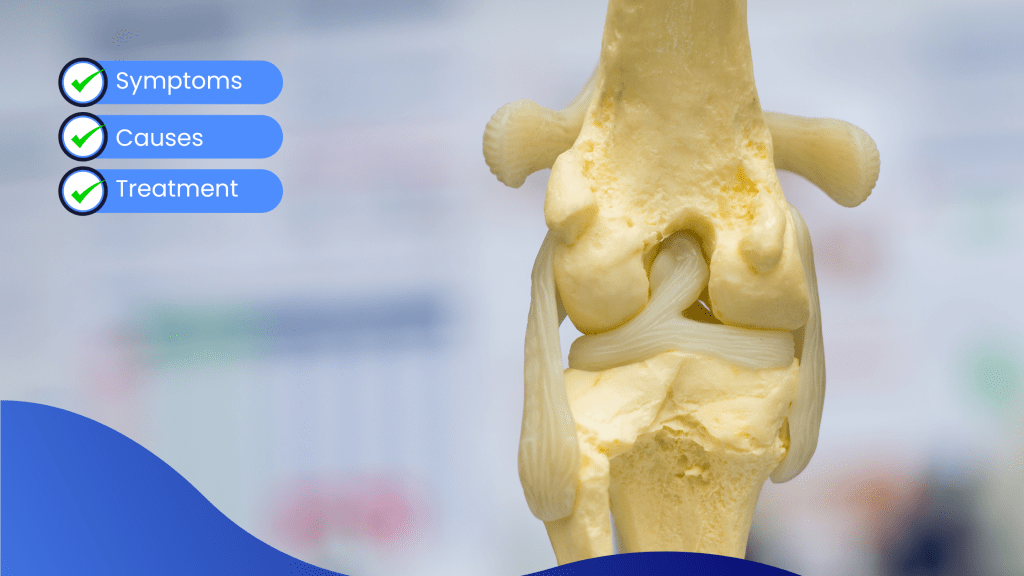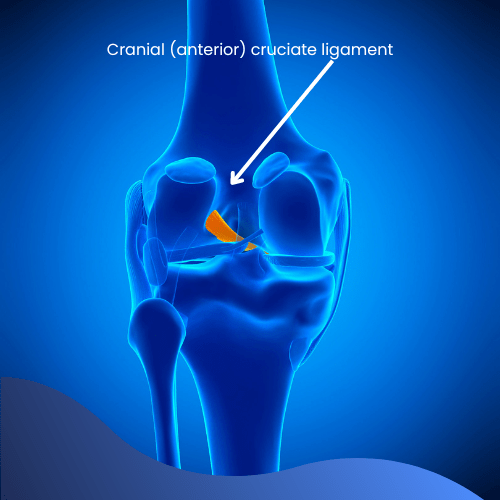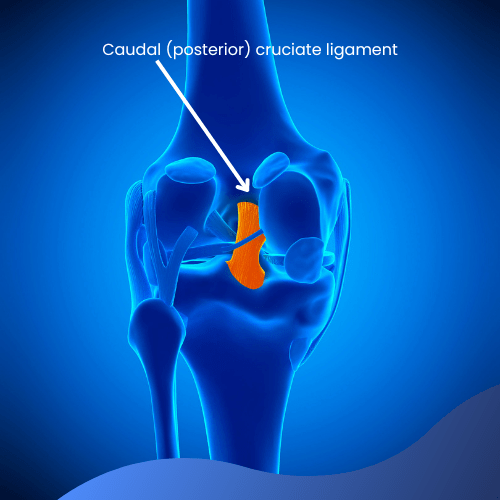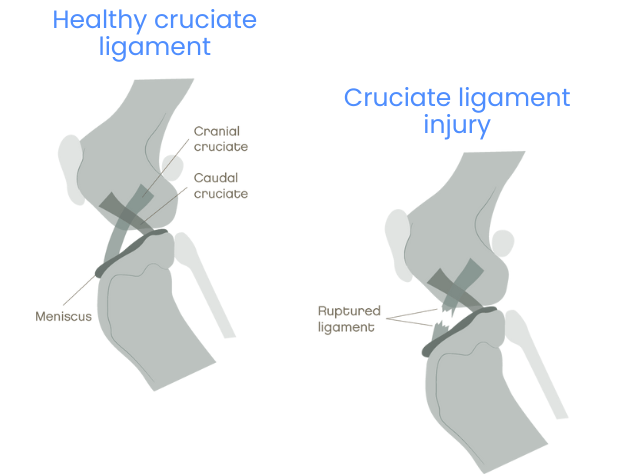
Cruciate ligament injuries are a common orthopedic issue in dogs, affecting their hind limbs. This blog aims to provide a thorough understanding of cruciate ligaments, the causes of injuries, common symptoms, diagnosis, and available treatment options.
Cruciate ligaments in dogs play a crucial role in stabilising the knee joint, also known as the stifle joint. There are two cruciate ligaments in each knee, the cranial cruciate ligament (CCL) and the caudal cruciate ligament. These ligaments are essential for maintaining the stability of the knee during various movements, such as walking, running, and jumping.

What Are Cruciate Ligaments?
Cruciate ligaments in dogs play a crucial role in stabilizing the knee joint, also known as the stifle joint. There are two cruciate ligaments in each knee, the cranial cruciate ligament (CCL) and the caudal cruciate ligament. These ligaments are essential for maintaining the stability of the knee during various movements, such as walking, running, and jumping.
Anatomy of Cruciate Ligaments:

Cranial Cruciate Ligament
- Located at the front of the knee joint.
- Prevents the tibia from sliding forward relative to the femur.
- Crucial for stability during weight-bearing activities.

Caudal Cruciate Ligament
- Positioned at the back of the knee joint.
- Provides additional support to prevent excessive rotation of the tibia.
What Are The Causes Of Cruciate Ligament Damage In Dogs?
Trauma
- Sudden twists or impacts to the knee joint
- Common in activities such as running, jumping, or rough play.
Age and genetics
- Certain breeds are prone to cruciate ligament injuries due to hereditary factors
- Older dogs may experience ligament damage degeneration over time.
Obesity
- Excess body weight puts additional strain and pressure on the joints.
- Obesity is a significant factor for ligament injuries.
Damaged Cruciate Ligaments

The cruciate ligaments help stabilise the knee and prevent it from moving in specific directions. Damage to these ligaments causes abnormal joint movement, overload, and damage to other structures, such as the meniscus, which are hard pieces of cartilage that sit in the knee joint and act as shock absorbers to help distribute weight. evenly distributed over the joint and helps add stability.
As a result, the cruciate ligament ruptures causing abnormal wear, instability, limping, and pain in the affected knee joint. In the short term and long term, it also causes degenerative joint disease, which should be noted.
What Are The Symptoms Of Cruciate Ligament Injuries:
Lameness
- Sudden or gradual onset of limping
- Reluctance to put weight on affected area.
Swelling
- Inflammation around the knee joint.
Pain
- Signs of discomfort, especially when touched in the affected area.
Difficulty Rising or sitting
- Reluctance to stand or sit down.
Changes in Gait
- Altered walking and running patterns.

How To Treat Cruciate Ligament Damage?
Some injuries require conservative management only, which is plenty of rest, restricted activity and anti-inflammarory medications.
In more severe cases surgical interventions may be needed. Find out more about the surgical procedures here.
How To Prevent Injury To Cruciate Ligaments?
Cruciate ligament can not always be prevented, however ensuring your dog maintains a healthy weight to reduce stress on the joints and regular exercise to keep them active and promote muscle strength and joint health will help.
Cruciate ligament injuries can significantly impact a dog’s quality of life, necessitating early detection and appropriate intervention, requiring consultation with a veterinarian for accurate diagnosis and treatment plans.
Thanks for reading, until next time…
